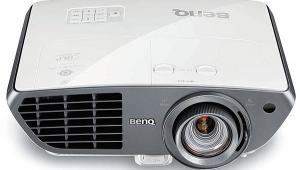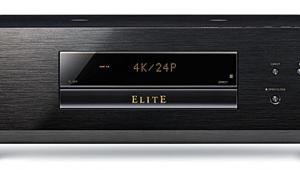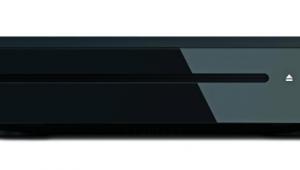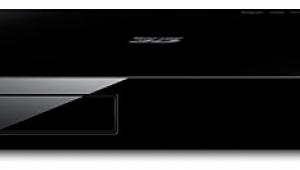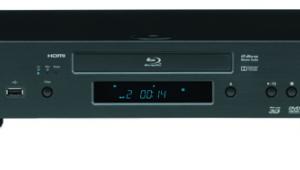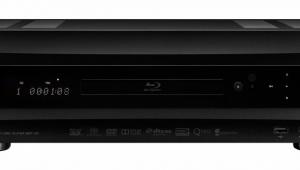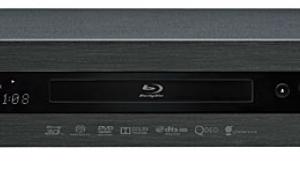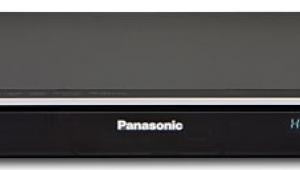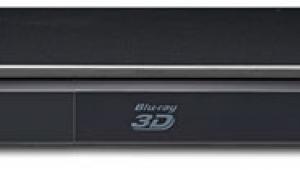Sharp SD-WH1000U Wireless Universal Player Review

AT A GLANCE
Plus
State-of-the-art wireless (WiSA) audio performance
Includes full WiHD
Wireless-HDMI link
Substantial, very high-
quality design
High-res audio compatible—wirelessly
Minus
File-streaming feature not fully baked
No mixed wired/wireless multichannel output
No video processing on HDMI inputs
Limited system control features
THE VERDICT
The SD-WH1000U is beautifully built and an outstanding A/V performer wired or wireless, but it’s not quite up to service as a full-system hub controller.
Trundle down to your local big-box store, and you will find quite literally dozens of Blu-ray Disc players on offer, starting well under $50. Big ones, little ones, skinny ones, flat ones, cheap ones, and cheaper ones.
None of these will be Sharp’s new SD-WH1000U, a Blu-ray player with a difference. Two differences, in fact: First, it has a jaw-slackening price tag of $5,000; second, Sharp’s design is wireless-centric, being the first WiSA-compatible player to appear, and one of the very first WiSA sources of any description.
As such, the SD-WH1000U is not merely a player. It’s meant to serve as a WiSA hub, the control center of a high-performance wireless system of up to 7.1 channels.
WiSA, while it may sound like something Jar Jar Binks would use to begin a sentence, stands for Wireless Speaker & Audio. The WiSA Association is a trade group promoting a unified, 7.1-channel wireless-speaker standard that proclaims high-res audio transparency as well as “interoperability,” meaning you can mix ’n’ match source and speaker brands and models with impunity. (In fairness, WiSA is on record as preferring the pronunciation “why-suh.”)
Setup
I set up the Sharp with a quintet of Bang & Olufsen WiSA loudspeakers we had on hand (pairs of BeoLab 17 and 18, plus a BeoLab 19 sub—vestiges of last issue’s review of the Avant 55 television system), eventually adding for a time my own center-channel speaker via one of two VR-WR100U “wireless bridge” components Sharp thoughtfully included for our use. This Bible-sized, monaural component adds $999 per wireless channel to the cost of a setup that requires one or more non-WiSA speakers.
The SD-WH1000U also includes a WiHD wireless-HD-video transmitter that screws onto its rear panel, making HDMI and power connections in so doing. Even better, Sharp packs a WiHD receiver with each player, completing the connection at no extra charge. (WiHD—Wireless HD—is a standard for HDMI-like video transmission operating in the 60-gigahertz radio band.)
The actual setup of this wireless mixed marriage proved unexpectedly easy. Easy, that is, once I decoded the meaning of the Bang & Olufsen loudspeaker manuals (which are printed almost entirely in Scandinavian picto-glyphs rather than old-fashioned language). Notably, there is currently no ability with the SD-WH1000U to mix wired and wireless channels in a single system. The menu allows you to select all wireless (up to 7.1 channels) or all wired channels (using the unit’s two-channel analog output, 5.1-channel digital coax/optical outputs, or 7.1-channel HDMI output). But you cannot, for example, run a wired front for left/right along with wireless surrounds. When one option is selected, the other is muted. Along with preventing easier retrofitting of the player to an existing multichannel system, this means that users with high-end stereo speakers up front who wish to retain a wired connection for two-channel audiophile playback would be required to take a trip through the menus to change over, and then back, each time. Sharp says they are considering a firmware update to allow simultaneous wired and wireless output.
With each speaker of my WiSA suite jacked to an AC outlet (wireless, my foot!), the SD-WH1000U powered on to a text onscreen menu. After I navigated to its WiSA settings page, “Manual Search” induced a wireless-discovery pause of a minute or two, after which the Sharp displayed an onscreen list of my five wireless items, each represented by a hexadecimal MAC address (02:ea:3d:00:1f:17, for example). Unfortunately, the player has no way of knowing which address is in which position; you have to assign them manually (via an onscreen rotation), and since you don’t necessarily know which speaker carries which address, an amusing game of trial and error ensues, or did at least in my case. Sharp told us later that, theoretically, all WiSA-compliant products should have their MAC address printed on a label somewhere on their outside skin.
The next screen has a simple graphic for circulating noise, with steps to adjust the familiar distance, level, and size options for each channel. Further up the menu structure are pages for video settings (the Sharp can scale to 4K if your display is so endowed), prioritizing SACD layers and DVD/Blu-ray secondary audio, and the usual disc-player options.

Around back, the SD-WH1000U provides stereo analog audio outputs in both balanced (XLR) and unbalanced (RCA) formats, coax and optical S/PDIF digital outs, 3-in/2-out HDMI, a USB port (plus another on the front), and a wired-Ethernet port (there’s also built-in Wi-Fi). Finally, the supplied, screw-on-rear-panel-bump adapter mentioned earlier empowers the Sharp to beam uncompressed WiHD wireless-HD video to your screen, though only up to 1080p resolution (of course, the display would either need a built-in WiHD receiver, or require use of the included add-on receiver).
Performance
There’s more, of course, but what we are interested in here, at least in the first place, is the Sharp’s wireless abilities. These, I am happy to report, proved entirely first rate. In nearly a month of listening—both casual and “auditionary,” stereo and multichannel alike—via my suite of 4.1-channel B&O WiSA speakers, I did not experience so much as a single solitary glitch, dropout, noise or distortion artifact, or any other audible deformation. Nor did I note any obvious loss of sound quality.
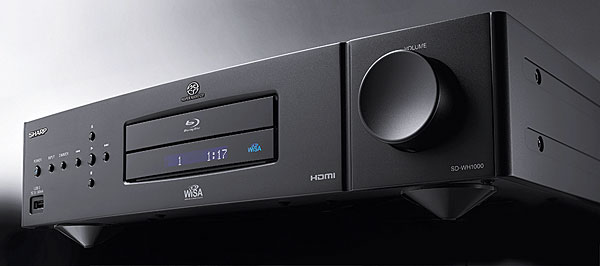
I did a good deal of intensive listening to stereo DSD files, from USB thumb drives jacked into the player’s front-panel port. I listened via the unfamiliar B&Os (though the BeoLab 18 is a very interesting loudspeaker design; see our full review, February/March and online at soundandvision.com) and also via my everyday power amp and Energy Veritas monitors, thanks to the pair of “wireless bridge” components Sharp included, alternating with my usual hookup via the player’s own conventional RCA outputs.
My conclusion is pretty firm: Via my own amplifier and loudspeakers, the Sharp’s WiSA connection, which sends files as uncompressed 96/24 digital audio, sounded the same as the unit did when connected via physical cables. Due to the impossibility of making direct, short-delay, same-speakers comparisons, I’m not quite yet prepared to stake my life on the question, but short of that, I’m pretty confident in characterizing the SD-WH1000U as wirelessly transparent on both CD-format and high-res audio playback.
